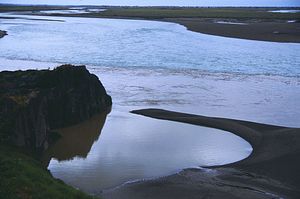Countries like China, India, and Pakistan have started counting every drop of water and are looking to maximize the use of transboundary water resources, especially the waters of infamous Indus basin, which are shared by Afghanistan, China, India and Pakistan.
In a recent development, which is seen as a threat to the 1960 Indus Water Treaty, India has suspended the meeting of Indus Water Commissioners of India and Pakistan. These meetings,wherein grievances of each country over Indus basin are addressed and data is shared, take place regularly. In reaction, Pakistan might approach the International Court of Justice.
In a perhaps related development, China has blocked some water flows to undertake work for a hydropower plant they are building. The move from China comes right after the week of the planned Indus deliberations. The Sutlej river originates in China in the Kailas mountain range and near the source of the rivers Indus, Ganges, and Brahmaputra. The river is 1,536 kilometers long and has a catchment area of 75,369 square kilometers, of which 70 percent is in India.
According to a report by the Food and Agriculture Organization of the United Nations (FAO) the total inflow from China to India in the Indus river basin is estimated at 181.62 cubic kilometers. The mean annual inflow into Pakistan from India through the western tributaries, considering the Indus Water Treaty, amounts to 170.27 cubic km. Thus a water stoppage by China would be a net loss for India, even if it diverts water from Pakistan (which India largely lacks the infrastructure to do at this time).
Many experts predict future wars will be fought over waters; however, there is a silver lining. Some (including myself) believe that water could prove to be a source for cooperation, which the Indus Water Treaty has proven. Unlike rest of the agreements between India and Pakistan, the treaty has withstood the wars between two countries.
The water quality of the Indus river and its tributaries is first-rate. The Pakistan Water Partnership in its report, Framework for Action for Achieving the Pakistan Water Vision-2025, mentions that total dissolved solids (TDS) in the river range between 60-374 ppm (parts per million), which makes it safe for multiple uses. The ecological and economic significance of the Indus basin can be gauged by the numbers: The Indus river basin has a total area of 1.12 million sq km, distributed between Pakistan (47 percent), India (39 percent), China (8 percent) and Afghanistan (6 percent). Besides, the basin covers an extensive groundwater aquifer, covering a command area of 16.2 million hectares. Roughly 300 million people are estimated to live in the Indus basin.
According to the FAO report, the total area equipped for irrigation in the entire Indus river basin is estimated to be around 26.3 million ha, of which Pakistan accounts for approximately 19.08 million ha or 72.7 percent, India 6.71 million ha or 25.6 percent, Afghanistan 0.44 million ha or 1.7 percent and China 0.03 million ha or 0.1 percent. The area actually being irrigated is estimated at 24.5 million ha.
The total water withdrawal in the Indus river basin is estimated at 299 cubic km, of which Pakistan accounts for approximately 63 percent, India 36 percent, Afghanistan 1 percent, and China barely 0.04 percent. Irrigation withdrawal accounts for 278 cubic km, or 93 percent of the total. Surface water and groundwater account for 52 percent and 48 percent of total withdrawals in the Indus river basin respectively.
The Pakistani part of the Indus river basin has a hydroelectric potential of about 50,000 MW. Its main gorge, between the Skardu and Tarbela, alone has a potential of almost 30,000 MW, as per a 2005 strategy background paper on water and energy by I.A. Qazilbash.
In 2010, India had six large dams in the Indus basin, with a total dam capacity of 18.6 cubic km. The Bhakra and Nangal dams are on the Sutlej river, Pandoh and Pong dams are on the Beas river, and Salal and Baglihar are on the Chenab river.
To manage their shared water resources, all four countries need to form a joint river basin institution for sustainable and efficient utilization of the Indus basin. The institution should be allowed to function independently, without any political pressures.
As John Briscoe, author of several books on the subject of India and Pakistan’s water, wrote in his paper “Troubled Waters: Can a Bridge Be Built over the Indus?” that the building of joint projects with benefits flowing both ways. He also suggested operating rules on Indian dams that would benefit Pakistan. The process is the tricky part and it is hard to conceive without the involvement of trusted third parties – not to diminish national autonomy, but to break the culture of mutual mistrust. As suggested by the title of his paper, Briscoe believes that a bridge could be built over these “troubled waters” and the Indus could, again, become a catalyst for cooperation.
Given the chance, the Indus basin can prove a win-win scenario for all four countries, both ecologically and economically. Hydro-diplomats have a role to play along with the multilateral institutions like the World Bank. Local and international NGOs also have a key role to play by bring all stakeholders of these countries together for cooperation on the Indus basin.
Bilal Hussain is a freelancer and writer. He was previously the sub-editor of the business section for Greater Kashmir and Kashmir Times. His principal interests are conflict economy, capital markets, the developmental sector, and ecological economics.
































